My
List |
Addition Date
|
Target
|
Mission
|
Instrument
|
Size
|

|
2013-01-07 |
Cassiopeia A
|
NuSTAR
|
NuSTAR
|
2200x2200x3 |
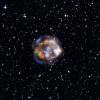
|
-
PIA16606:
-
Sizzling Remains of a Dead Star
Full Resolution:
TIFF
(14.53 MB)
JPEG
(408.9 kB)
|

|
2009-01-06 |
Cassiopeia A
|
Chandra X-ray Observatory
Spitzer Space Telescope
|
Chandra X-ray Telescope
IRAC
|
719x479x3 |
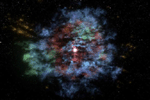
|
-
PIA11748:
-
Supernova Remnant in 3-D

Full Resolution:
TIFF
(1.035 MB)
JPEG
(36.78 kB)
|

|
2008-10-01 |
Cassiopeia A
|
Spitzer Space Telescope
|
MIPS
|
1769x1341x3 |
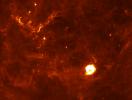
|
-
PIA11213:
-
Supernova Flashback
Full Resolution:
TIFF
(7.128 MB)
JPEG
(135.1 kB)
|

|
2008-05-29 |
Cassiopeia A
|
Spitzer Space Telescope
|
|
5000x4965x3 |
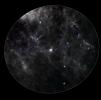
|
-
PIA10725:
-
Dance of the Light Echoes
Full Resolution:
TIFF
(74.48 MB)
JPEG
(1.502 MB)
|

|
2008-05-29 |
Cassiopeia A
|
Spitzer Space Telescope
|
|
641x479x3 |
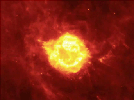
|
-
PIA10724:
-
Cauldron of Light

Full Resolution:
TIFF
(922.3 kB)
JPEG
(21.94 kB)
|

|
2007-12-20 |
Cassiopeia A
|
Spitzer Space Telescope
|
Infrared Spectrograph (IRS)
|
960x960x3 |
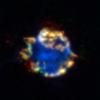
|
-
PIA10206:
-
Cosmic Ornament of Gas and Dust
Full Resolution:
TIFF
(2.769 MB)
JPEG
(33.43 kB)
|

|
2007-12-20 |
Cassiopeia A
|
Spitzer Space Telescope
|
Infrared Spectrograph (IRS)
|
3000x2400x3 |
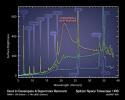
|
-
PIA10207:
-
Dissecting the Wake of a Supernova Explosion
Full Resolution:
TIFF
(21.6 MB)
JPEG
(400.6 kB)
|

|
2006-10-26 |
Cassiopeia A
|
Spitzer Space Telescope
|
IRAC
|
1600x1600x3 |
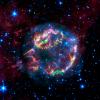
|
-
PIA01903:
-
Lighting up a Dead Star's Layers
Full Resolution:
TIFF
(7.693 MB)
JPEG
(218 kB)
|

|
2006-10-26 |
Cassiopeia A
|
Spitzer Space Telescope
|
IRAC
|
638x477x3 |
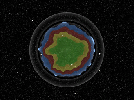
|
-
PIA01902:
-
Order Amidst Chaos of Star's Explosion (Artist Concept)

Full Resolution:
TIFF
(914.2 kB)
JPEG
(56.6 kB)
|

|
2006-10-26 |
Cassiopeia A
|
Spitzer Space Telescope
|
|
2400x3000x3 |

|
-
PIA01901:
-
Once an Onion, Always an Onion (Artist Concept)
Full Resolution:
TIFF
(21.62 MB)
JPEG
(576.9 kB)
|

|
2005-06-10 |
Cassiopeia A
|
Hubble Space Telescope
Spitzer Space Telescope
|
IRAC
Visible Light
Chandra X-ray Telescope
|
1835x1348x3 |
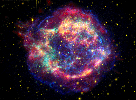
|
-
PIA03519:
-
Cassiopeia A: Death Becomes Her

Full Resolution:
TIFF
(7.432 MB)
JPEG
(263.6 kB)
|

|
2005-06-10 |
Cassiopeia A
|
Spitzer Space Telescope
|
IRAC
|
2842x1622x3 |
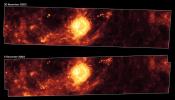
|
-
PIA03518:
-
A Year in the Life of an Infrared Echo
Full Resolution:
TIFF
(13.83 MB)
JPEG
(301.2 kB)
|

|
2005-06-10 |
Cassiopeia A
|
Spitzer Space Telescope
|
IRAC
|
2826x774x3 |

|
-
PIA03517:
Dead Star Rumbles
Full Resolution:
TIFF
(6.562 MB)
JPEG
(138.9 kB)
|

 Planetary Data System
Planetary Data System

























